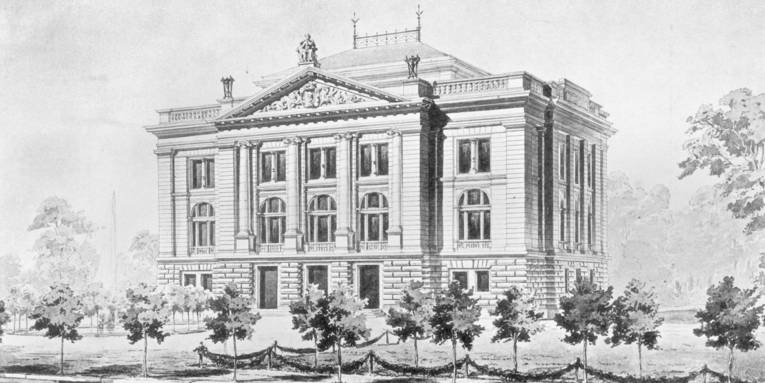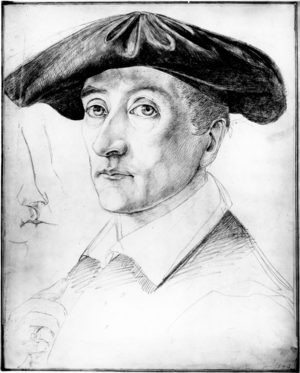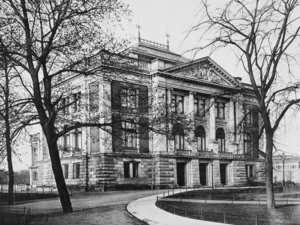Background
History of the Museum August Kestner
 © LHH
© LHH Former exterior view of the Museum August Kestner
The oldest Museum of the State Capital was founded more than 120 years ago.
 © LHH
© LHH August Kestner, self portrait, Rome 1840
During his time as Hanoverian envoy to Rome August Kestner (1777-1853) collected a considerable number of small Egyptian and Greco-Roman artworks as well as other objects of art. After his death his nephew, Hermann Kestner, received the collection with the proviso to pass it on to Kestner's native city of Hannover. In 1887 the heritage was extended by the collection of the Hanoverian Senator and printing house owner Friedrich Culemann, mostly consisting of Medieval craftwork. These two collections constitute the founding stock of the Kestner Museum, which was opened in 1889.
As one of the three municipal museums of the City of Hannover, the Museum August Kestner is situated in the city centre next to the Neues Rathaus (New Town Hall). The museum is easily accessible, with stations for bus and underground as well as approach streets nearby and the central railway station only a few minutes' walk away.
The house is enclosed in a façade made of glass and concrete from 1961 that is a protected monument. Parts of the staircase and the side wings as well as almost the complete entrance facade of the original first museum building can still be seen inside the edifice.
Museum August Kestner is the only institution in Hannover and far beyond that displays to the visitor applied art from 6000 years in four collections: Antiquity, Egyptian cultures, applied art/design and a valuable numismatic collection. Attracted by the highlights of the permanent exhibition, every year many visitors from abroad visit the Museum August Kestner.
 © LHH
© LHH Former exterior view of the Museum August Kestner
Besides, several special exhibitions per year illuminate particular topics, set objects from the collections in an exceptional context or supplement the house’s objects for a certain period.
Various museum festivities present it in an entertaining manner, and of course a comprehensive programme by the museum’s educational service, comprising guided tours, lectures, seminars and also workshops for children, schools and families, ensure that art historical knowledge is conveyed in an interesting and enjoyable way.
A special feature here are the guided tours for deaf and hearing persons, which are accompanied by a sign language interpreter, or guided tours that were specially devised for blind and visually impaired people, under the title 'Museum seen differently'.
A broad professional audience also shows lively interest in the inventory, some of which is unique in the world. Almost daily there are requests to the museum concerning additions to scientific works, publication in professional journals or educational books, and numerous requests for internships.
Many of the objects have been shown in TV documentaries or borrowed by international museums for exhibition projects. There is likewise interest in the library, which besides comprehensive standard works offers numerous rarities and peculiarities.
In November 2007, on the 230th birthday of August Kestner, the house was renamed 'Museum August Kestner'.
 Deutsch
Deutsch
 English
English
 中文
中文
 Dansk
Dansk
 Eesti
Eesti
 Español
Español
 Suomi
Suomi
 Français
Français
 Italiano
Italiano
 日本語
日本語
 한국
한국
 Nederlands
Nederlands
 Norge
Norge
 Polski
Polski
 Portugues
Portugues
 Русский
Русский
 Svenska
Svenska